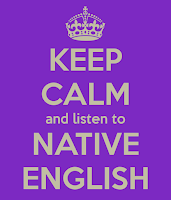Listening: the visual context, gestures, drawings, body
language
- Implication of the learner as listener. It means that the child must learn in action.
- The use of gestures, drawings and body language is recommended to create an encouraging atmosphere in the classroom.
- Background disturbing noise must be avoided.
- Sounds or acoustic references may encourage comprehension.
- In time the acoustic material should become more realistic.
- Visual support is always necessary in early listening exercises in order to create a context and assist the listening effort.
Early descriptions
- Early descriptions may arise from the use of some commands as a simple answer to the questions why or what for.
The use of the mother tongue as a compensating strategy
- Though the use of the FL is the goal, the first language can be used as a helping hand to maintain motivation.
- The first language can also provide context. In this case it is the equivalent to a picture.
- Some conclusive parts of the listening interactive task may require the exclusive use of the FL.
Reasons for listening
- We, as non-native speakers of English, need to understand more than we should be able to produce.
- The samples of spoken language in all course-books do not contain a sufficiently high proportion of the features of natural speech.













